|
|
|
![]() back to "The Grand Tour" index
back to "The Grand Tour" index
Neville Malkin's "Grand Tour" of the Potteries
buildings of
Tunstall and the surrounding area
![]()
![]()
![]()
next: James Brindley's
grave
previous: Victoria Hall,
Kidsgrove
contents: index of buildings of Tunstall and surrounding area
|
No 35 - St. James's Church, Newchapel
'New Chapel.' West view showing a chapel
built in the classic style of architecture. The nave has four round-headed
windows, there is a west entrance, and a bell turret of pyramidal design.
© Staffordshire Past Track |

St. James, Newchapel
pen drawing by Neville Malkin -
April 1976
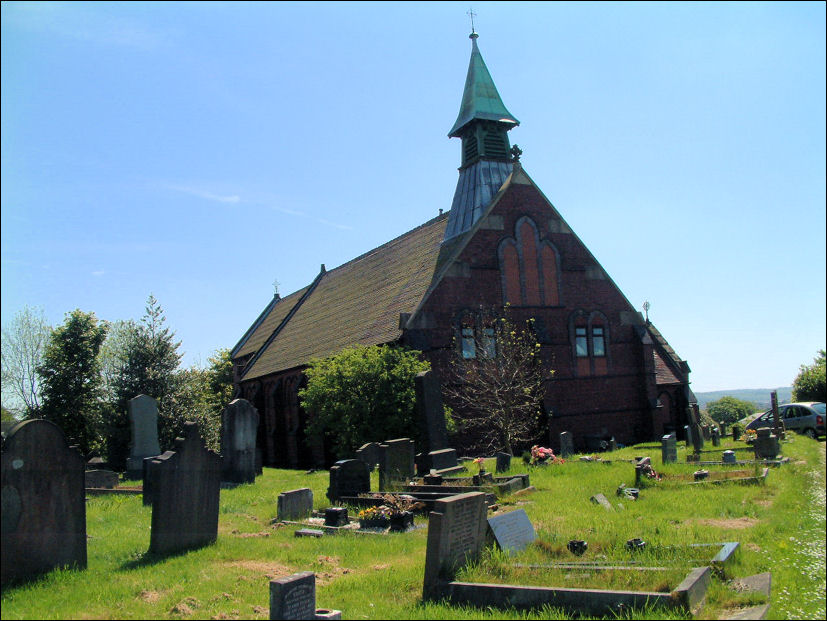
St. James, Newchapel
photo: May 2009
|
"This
towerless and sizeable red brick building, standing in spacious and
exposed grounds on top of a ridge on the northern boundary of the
City, is the church of St. James at Newchapel. It was built in 1878-80
from a design by a local firm, T. Lewis and Son, and, although of
little architectural importance, is still worthy of mention because of
the long association this site has with the development of the Church
in the area. It appears that the village of Newchapel was originally the townstead of adjoining Thursfield and took its name from the time a chapel was first erected, which is believed to have been during the mid-16th century. It was eventually replaced in the 1760s by another chapel described as a neat brick building with a cupola and bell, well-pewed, with seating for more than 300. Originally the church was founded by some of the principal landowners in the district, which included the families of Bowyer, Sneyd and Bourne. It later became a perpetual curacy by augmentation from Queen Anne's Bounty. For a great many years, the chapel served a very large area; until the opening of Christ Church, Tunstall in 1832, it was the only place of worship belonging to the Established Church in the Parish of Wolstanton, besides the Mother Church. Wolstanton Parish was then divided into two parts, north and south; the northern one constituted the Chapelry of Newchapel, and contained eight villages and hamlets: Tunstall, Chell, Oldcott, Ranscliff, Brieryhurst, Stadmerslow, Thursfield and Wedgwood. St. James's cemetery is probably best known as the burial place of James Brindley, the famous engineer and canal builder, who lived at nearby Turnhurst Hall. A free grammar school for the education of 18 poor boys was founded in Newchapel in the early 1700's by Dr. Robert Hulme, of Sandbach, who left, in his will of 1714, an estate in Odd Rode for its support."
|
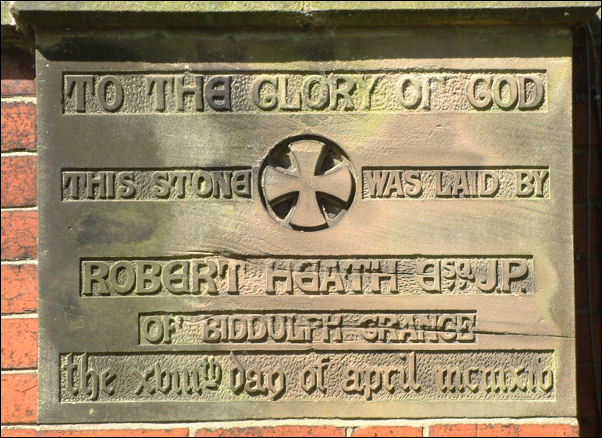
It was not until 1914 that the
chancel was added
To The Glory of God
this stone was laid by
Robert Heath Esq JP
of Biddulph Grange
the xviiith day of april mcmxiv
[18th April 1914]
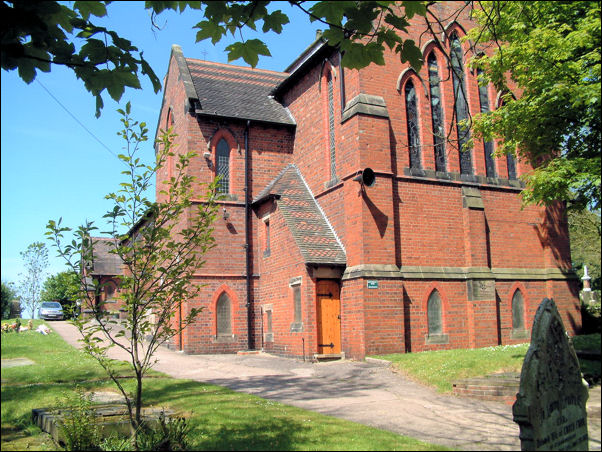
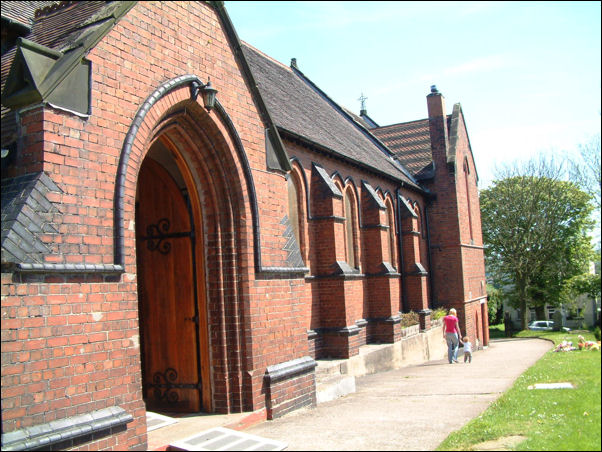
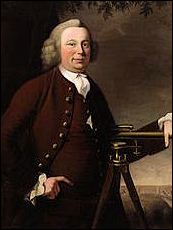
- click for index page on Brindley -
![]()
![]()
![]()
next: James Brindley's
grave
previous: Victoria Hall,
Kidsgrove
contents: index of buildings of Tunstall and surrounding area
back to "The Grand Tour" index